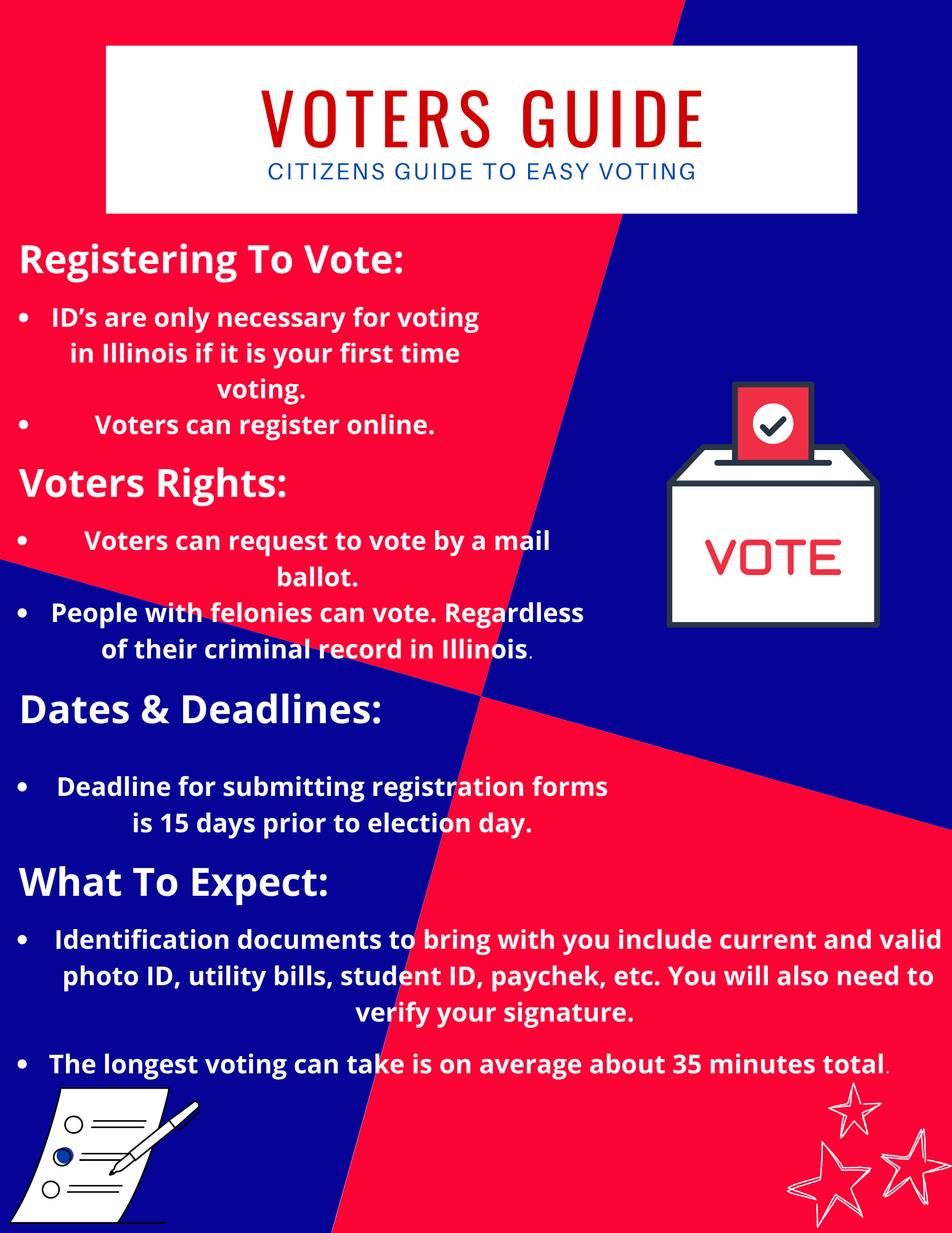Illinois Democracy School Takes Inquiry to Informed Action to Encourage Informed, and Equitable Voting

This past summer, educators from Illinois joined teachers from around the country in a four-day institute hosted by the Civic Engagement Research Group (CERG) at the University of California-Riverside and the Center for Information and Research on Civic Learning and Engagement (CIRCLE) at the Jonathan M. Tisch College of Civic Life at Tufts University. The purpose of the summer institute was to learn how to facilitate informed and equitable voting in their communities during the 2022 Midterm Elections and beyond.
Topics covered included:
- Key approaches to civic education
- Educational resources and models for teaching about elections and voting in a nonpartisan way
- Research on why schools and educators have a critical role in building informed and equitable voting
- Opportunities to connect to educational goals and content standards
- Dynamics that constrain informed and equitable voting
- School- and community-specific action planning for the 2022 election and beyond
Jason Artman, an Illinois Civic Hub Instructional Coach and department chair at Mendota High School, an Illinois Democracy School, recently engaged his students in a project to promote informed and equitable voting in his community. We asked Jason about his experience. Here are his responses.
What did you learn about informed and equitable voting from participating in this summer’s institute?
One of the biggest takeaways from the summer experience was that we, as teachers, will cover this content and use these resources quite differently depending on where we live and work. At times, I was in breakout rooms with teachers whose school districts have more people than my county (and my county has multiple school districts within it).
It became apparent that to reach our students, we have to think about more than getting people to vote–many of our students cannot vote, no matter how much they wish to. Classroom activities focused only on convincing students to vote may miss the mark because the activity is not relevant to those who are not citizens and perhaps those who are far from voting age. To be relevant, our classroom activities must look at bigger-picture issues like barriers to voting and promoting actions students can take.
The Youth Voting database on CIRCLE’s website was an incredibly powerful tool for illustrating to students voting patterns and voter participation, perhaps at a local level where there is enough data and population for those numbers to have some meaning, but certainly at the state level, even for those of us in rural districts with fewer voters–some of the most detailed button options just weren’t options for my area, but at the state level, they were there.
How did you apply what you learned about informed and equitable voting to your classroom this fall?
I focused on barriers to voting and how students could encourage those people they knew who were eligible to vote to register to vote.
After learning about barriers to voting and seeing the voter turnout numbers from recent elections, students developed voter registration guides that were both general and specific to where they lived. Our school district extends across the borders of three different counties, so there were differences in what was available to them based on where they lived, even if they sat in the same classroom.
When a voter registrar visited the school, students turned some registration guides into posters and encouraged registration among their peers. At a later visit to a school board meeting, the registrar commended the students for their knowledge of voter registration and interactions with her. Until then, I was unaware that so many had interacted with her.
How did this project deepen students’ knowledge of themselves and their community?
Because the three counties handle elections and their websites differently, the students were amazed that students in one county could find information a little easier than students in the other counties–it came down to how and where each county listed information. I think little things like that help students see how different levels of government operate.
The students were not entirely unfamiliar with news stories of voter suppression and claims of voter fraud before the project, but it was new for students to examine how some voters could slip through the cracks and be denied the right to vote by states that require IDs and have restrictive registration requirements; it was likewise new to students that convicted felons are treated differently across the country when it comes to future voting rights.
We are not in a large, metropolitan area where long lines to vote may be commonplace. It had not occurred to me that my students would think voting took a long time–they seemed shocked that they could be done in a few minutes.
What comes next? What did students identify as future opportunities to facilitate informed and equitable voting in their communities?
Only two of the 57 students we had working on this project will be 18 on election day, so knowing where and how to register and being aware of low voter turnout issues and barriers to voting can help those students when they register and come to voting age. Learning about mail-in ballots and early voting may encourage some headed to college to vote in 2024.
What advice would you give teachers thinking about opportunities for engaging their students in learning around informed and equitable voting?
In my case, student interest drove the project once I showed them voter turnout numbers and the barriers to voting some people experience. My students are seniors–most are not yet of voting age for this midterm election but certainly will be for 2024; giving students a voice to try something and reach beyond their comfort zones in the classroom helped turn this into a student-driven project. Had this been entirely teacher-driven, I don’t know that this project would have had the same impact on all students–indeed, some were more into it than others, but that’s not unusual.
